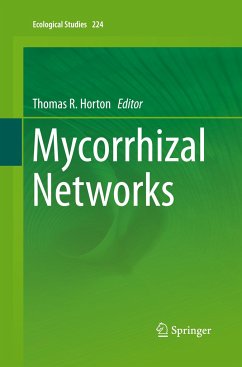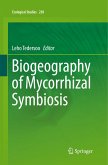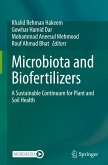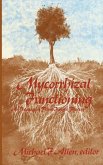The last 25 years have seen significant advances in our understanding of the mycorrhizal fungi that colonize most of the world's plants, and the mycorrhizal networks that form and extend into the soil beyond plant roots. In addition to a thorough review of recent research on mycorrhizal networks, this book provides readers with alternative perspectives. The book is organized into three sections: Network Structure, Nutrient Dynamics, and the Mutualism-Parasitism Continuum.
Chapter 1 addresses the specificity of ectomycorrhizal symbionts and its role in plant communities, and provides an updated list of terms and definitions. Chapter 2 explores interactions between symbionts in mycorrhizal fungi networks, as well as interactions between fungal individuals. The second section of the book begins with the examination in Chapter 3 of extramatrical mycelium (mycelia beyond the root tips) in ectomycorrhizal fungi, focused on carbon and nitrogen. Chapter 4 reviews the influenceof mycorrhizal networks on outcomes of plant competition in arbuscular mycorrhizal plant communities. Chapter 5 discusses nutrient movement between plants through networks with a focus on the magnitude, fate and importance of mycorrhiza-derived nutrients in ectomycorrhizal plants. Section 3
opens with a review of research on the role of ectomycorrhizal networks on seedling establishment in a primary successional habitat, in Chapter 6. The focus of Chapter 7 is on facilitation and antagonism in arbuscular mycorrhizal networks. Chapter 8 explores the unique networking dynamic of Alnus, which differs from most ectomycorrhizal plant hosts in forming isolated networks with little direct connections to networks of other host species in a forest. Chapter 9 argues that most experiments have not adequately tested the role of mycorrhizal networks on plant community dynamics, and suggests more tests to rule out alternative hypotheses to carbon movement between plants, especially those that include experimental manipulations of the mycorrhizal networks.
Plant ecologists have accumulated a rich body of knowledge regarding nutrient acquisition by plants. The editor proposes that research indicating that mycorrhizal fungi compete for nutrients, which are then delivered to multiple hosts through mycorrhizal networks, represents an important new paradigm for plant ecologists.
Chapter 1 addresses the specificity of ectomycorrhizal symbionts and its role in plant communities, and provides an updated list of terms and definitions. Chapter 2 explores interactions between symbionts in mycorrhizal fungi networks, as well as interactions between fungal individuals. The second section of the book begins with the examination in Chapter 3 of extramatrical mycelium (mycelia beyond the root tips) in ectomycorrhizal fungi, focused on carbon and nitrogen. Chapter 4 reviews the influenceof mycorrhizal networks on outcomes of plant competition in arbuscular mycorrhizal plant communities. Chapter 5 discusses nutrient movement between plants through networks with a focus on the magnitude, fate and importance of mycorrhiza-derived nutrients in ectomycorrhizal plants. Section 3
opens with a review of research on the role of ectomycorrhizal networks on seedling establishment in a primary successional habitat, in Chapter 6. The focus of Chapter 7 is on facilitation and antagonism in arbuscular mycorrhizal networks. Chapter 8 explores the unique networking dynamic of Alnus, which differs from most ectomycorrhizal plant hosts in forming isolated networks with little direct connections to networks of other host species in a forest. Chapter 9 argues that most experiments have not adequately tested the role of mycorrhizal networks on plant community dynamics, and suggests more tests to rule out alternative hypotheses to carbon movement between plants, especially those that include experimental manipulations of the mycorrhizal networks.
Plant ecologists have accumulated a rich body of knowledge regarding nutrient acquisition by plants. The editor proposes that research indicating that mycorrhizal fungi compete for nutrients, which are then delivered to multiple hosts through mycorrhizal networks, represents an important new paradigm for plant ecologists.
"The book brings together a group of well-respected experts in their particular fields of mycology and ecology. ... The editor, authors and publishing staff did an excellent job on the content, style, and format of this book. Overall, I can recommend this book as a reference source for scientists already involved in mycorrhizal research, and as a scoping source for scientists from other disciplines looking for a manageable and well-studied example of a symbiotic system." (Richard O'Hanlon, Symbiosis, January, 2016)








